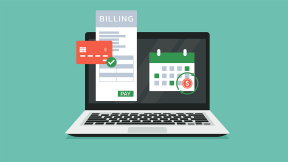630 credit score: A guide to credit scores

Quick insights
- A 630 credit score is considered “fair” by most scoring models.
- You may face some difficulty with a 630 credit score, but you are not far from reaching the next tier.
- With consistent, healthy habits, you can find ways to help improve your 630 credit score.
Whether you’re thinking about getting a credit card or applying for a mortgage, you might be wondering how your credit score can impact these financial decisions. If you have a 630 credit score, there could be some limitations, but there are available resources to help you improve it and achieve the goals you want. Let’s discuss more below.
Decoding a 630 credit score
A credit score of 630 falls into the "fair" credit score range for both VantageScore® and FICO® scoring models. Fair is between the higher tier of scores (“good” and “excellent”) and the lower end of credit scores (“poor”).
According to Experian’s report in 2023, the average credit score in the U.S. is 715. With a 630 credit score, you’re below the national average, but not by much. With this score, you may be able to access some financial possibilities, but with consistency and practice, you could raise your score and open doors to even more opportunities.
Implications of a 630 credit score
With a 630 credit score, you’re about 30-40 points from hitting the “good” credit score category, which is typically a score at or above 661 for VantageScore and at or above 670 for FICO. Even though you might not be far from a more favorable credit score category, a 630 score could keep you from landing lower annual percentage rates (APRs) on credit cards and other loans.
You could also find that you have higher insurance premiums or a more difficult time receiving approvals for loans or rentals, as many companies use credit scores as part of the decision-making process.
Remember, your credit score is not an indication of your worth. Rather, your credit score is a tool used to help gauge your financial risk to potential lenders as a snapshot of your creditworthiness. A 630 score does not necessarily mean you have a poor track record when it comes to making financial decisions. It could simply mean you lack a robust credit history, for example, which you can build over time.
How to navigate financial decisions with a 630 credit score
If you’re considering applying for a card or making your next financial choice with a 630 credit score, focus on ways you can continue to build your credit. For example, if you’re falling into a debt trap, avoid taking out more lines of credit. Instead, prioritize repaying your debts and eliminating unnecessary expenses.
If your 630 score is due to a lack of credit mix, consider taking out additional forms of credit. For example, you may have a credit card but haven‘t taken out a personal loan to help pay for a large purchase. Note that any time you apply for a new line of credit, your potential lender will run a hard inquiry, which will result in a small, short-term decrease to your credit score.
If you're currently struggling to gain approval for loans or credit cards of your choice, you could bring in a trusted friend or loved one. For example, a co-signer could help you with getting approved for a loan, or you could become an authorized user on a friend or family member’s credit card. These are just some ways to help you navigate your options with a 630 credit score.
Note that primary cardmembers hold the final responsibility to make the card balance. If you or they fail to do so, this could negatively impact your score. However, the opposite is true as well. Consistent, timely payments can reflect positively in your credit score.
Strategies to help improve a 630 credit score
To help set you up for a path towards increasing your 630 credit score, consider implementing the following strategies:
- Make payments on time, as payment history makes up a large portion of your credit score.
- Reduce outstanding debt. You can do this using several different methods depending on your situation, such as the snowball method or debt avalanche method.
- Lowering your credit utilization ratio, which is the proportion of your credit usage against your total available credit. Ideally, keep this ratio to about 30% or lower.
- Monitor your credit report to make sure your information is accurate.
- Avoid closing old credit card accounts, especially if they’ve been open for a long time. This is because closing a longstanding card can affect your credit history. Use these cards sparingly to keep them open and active.
It takes time to improve a credit score. It’s a gradual process that requires consistent good habits. With determination, grace and patience, you can put yourself on a path to financial success.
In summary
A 630 credit score does not automatically imply that you are making poor financial decisions. It could mean you need to make some tweaks to your current plan to achieve a higher credit score. It could also mean that you need to build up more of a credit history. Making these small changes and adopting a consistent, responsible credit behavior can potentially improve your overall financial wellness, lift your score and hopefully grant you greater financial opportunities.



